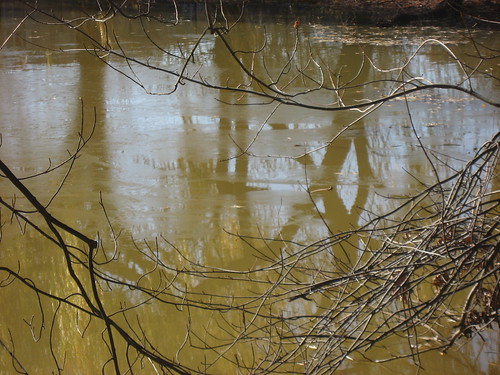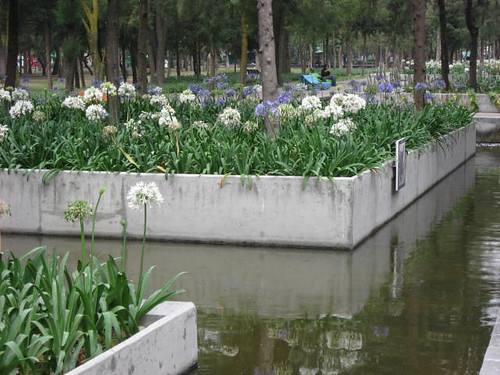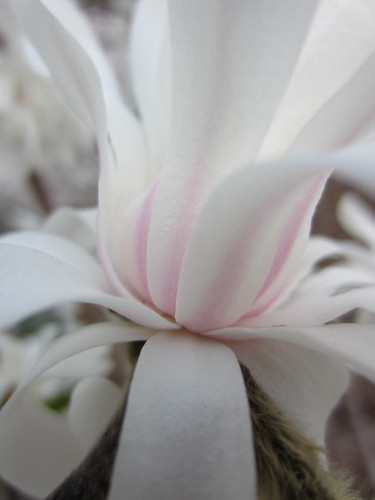So we are busy interviewing candidates to take my job while I'm away on sabbatical. It's been a revealing process. As we discuss our program with candidates it comes clear how unique we are, how centered we are on the process of teaching and learning, and how we (and I) have evolved over the years since I came to the job.


When I started 18 years ago our science curriculum was set in stone, a lockstep progression through two semesters of "physical science" and two semesters of "biological science." I came to learn early on that our students, all non-science majors, were fairly immune to content. Or maybe it's that I soon understood the weakness of strict content vs. process and philosophy of science. A core curriculum, as strictly as we adhered to customs of the group there was allowance for some inventiveness when it came to how to teach. One of my "innovations" was to take groups of students (sometimes as large as 45 students...we were teaching classes of up to 140 some years) to Hall's Pond, a nearby nature preserve. Dismissed then as "froo-froo," we spend a whole semester now on outside lab activities.
We began to change our group's focus somewhat when a new chair came on. Instead of adhering strictly to physical vs. biological sciences we borrowed from one anothers' curricula to approach science more conceptually, as a set of ways to think about nature rather than a set of "facts" about nature. Our group spent many hours in deep discussion about pedagogy and plot, trying to figure out how we could put together a coherent "story" about science that engaged our non-major students. About this time I was innovating learning modalities in which students were encouraged to "visualize" science, much the way scientists do, and to build models, which is exactly how scientists communicate about their findings. Instead of lab reports I asked students to model ideas through videos, which they posted on Youtube. I set an example by making my own science animations, which have by now received almost a million hits. Most of the student videos were high schoolish, I have to admit, but a few of them were, and are, brilliant. It seemed to make a lot of sense that our students, many of whom were Communications majors, would benefit on many levels from the video-as-scientific-model exercise.
Initially criticized or at best ignored, my approach was eventually taken up by several science professors as we continued to stress visual learning as a strategy for improved learning outcomes. I pitched the ideas I was developing to our new Dean, who didn't seem to be interested. Or maybe she didn't understand. The twin sugarplums of fundraising and redecorating our '70s purpose-built brutalist building were starting to dance before her eyes. Then a few years later the directive came from on high to adopt "e-portfolios," a product the University had bought into. She jumped on the bandwagon of this counter-intuitive, clumsy, and plagiarism-prone tool and foisted it on us. By then I had graduated to flickr, which allowed me much greater flexibility, immediacy, and grading utility than the e-portfolio.
I was caught unawares when the focus of our students shifted from COM, the School of Communications to SMG, the School of Management. COM was always a safe choice for our students because of no language or math requirement, along with some liberal arts components. SMG came to appeal because many of our students think they will go into "finance" as a "profession." Along with this shifting stress came an ever lower level of intellectual curiosity among our students.
Realizing the importance of maintaining an interdisciplinary approach, I started focusing on how to bring aspects of our program's non-science courses into a scientific perspective. In addition, taking a systems approach to cell organization, metabolic processes, and biochemical relationships I encouraged my students to think about how what they were learning in science might translate into their thoughts about management. I learned soon enough that in their 6-credit management course they were focusing on advanced ideas like how to put a bullet presentation together in PowerPoint. Or how to respond to a midnight assignment. Might I have misinterpreted my audience?
Interesting that early on I pitched interdisciplinarity to our dean over lunch with the then-director of the Center for Teaching and Learning Excellence. I even proposed the name "Center for Interdisciplinary Studies." Meanwhile our science faculty focused on making our courses interdisciplinary, meaningful, even "relevant" to our students. Then about three years ago the dean decided that students needed more latitude in choosing elective courses and cut the freshman part of our science curriculum. This entailed a painful halving of our staff. Goodbye colleagues, even your "warts" look better now that we are bereft of you! When I asked our University President at a town meeting whether he knew our College FTEs were being cut by 10% he huffed and said it "couldn't be." This is the same year I was denied sabbatical, the year I held a Fulbright invitation to teach in Thailand in my hand.
The Science Division retrenched and worked anew at making our courses sleek, useful, and intellectually stimulating to our students. Fully immersed in the interdisciplinary ideal, we were surprised when the Dean decided to open a new "Center for Interdisciplinary Studies" at our College. More than just a name, the new "Center" will entail more architectural remodeling both of the building and curriculum. At a recent faculty meeting we were regaled with the new theme of professional baseball as a focus for the intellectual pursuit of "interdisciplinarity."
I used the word "evolving" in the title of this post. And in a Darwinian sense it's useful to mention that one's professional survival in our school is strongly determined by student evaluations. The reports of 20-year-olds are the major selective pressure where I work. Maybe this extends to the survival of the program. Rather than waste our breath on the foundations of a liberal education why not keep that wide screen TV going in the lobby and sell parents and their kids on our fun focus on sports? Go Sox!







No comments:
Post a Comment